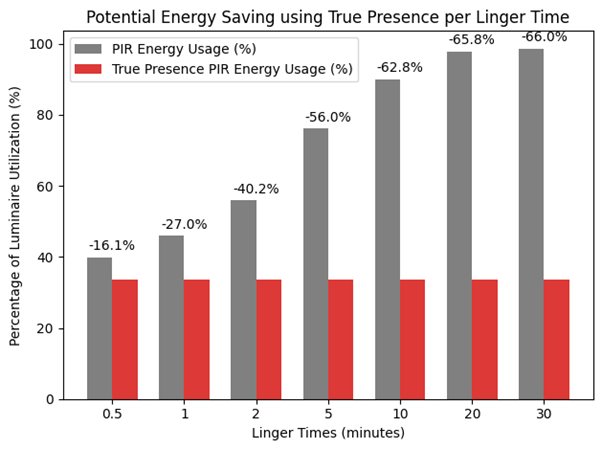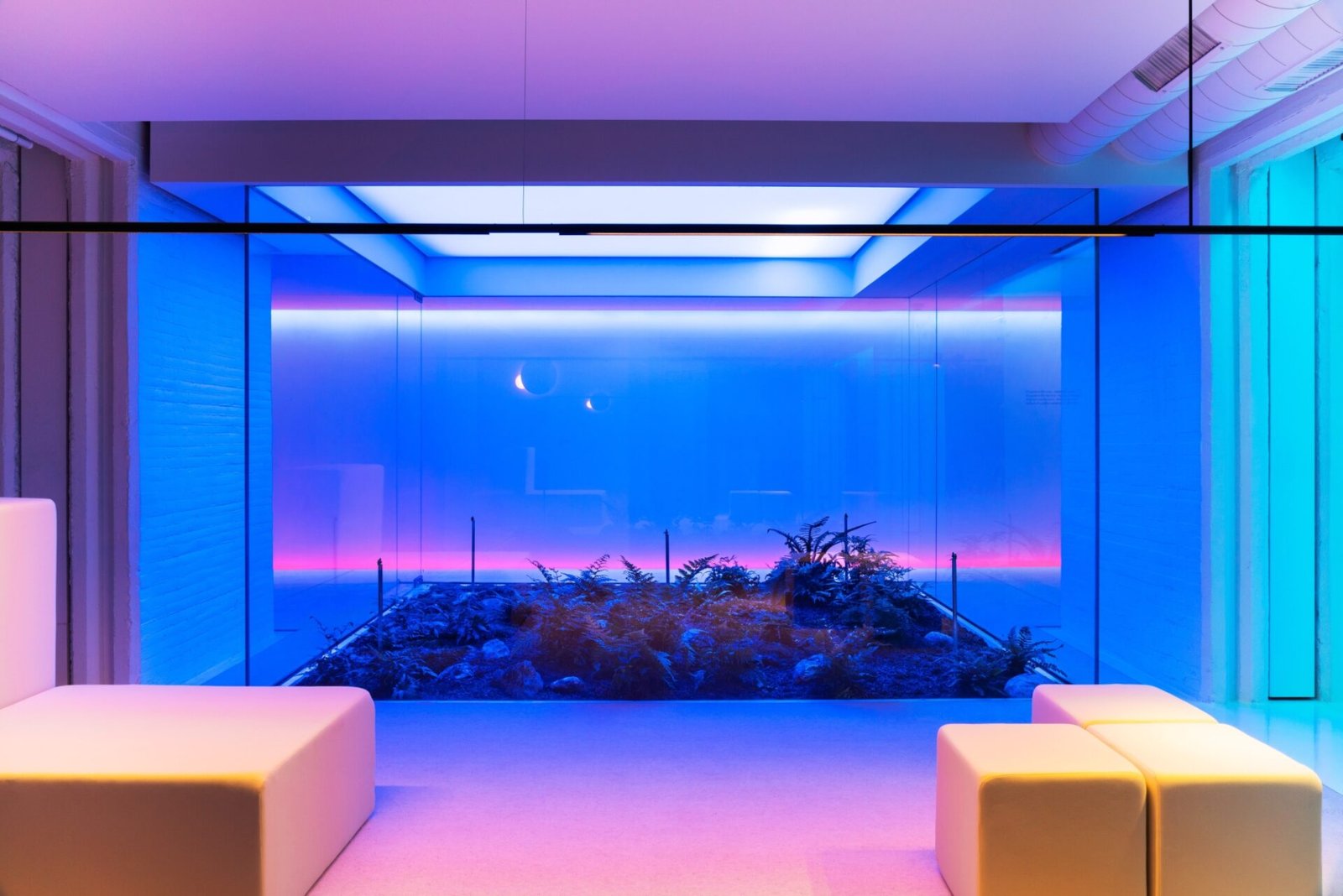

Linger: An Unnecessary Evil?
In the pursuit of balancing energy efficiency with comfort and human-centric environments, lighting controls have evolved significantly.
A widely used concept in lighting management is “linger time”—the idea that lights should remain on for a set period after motion ceases, preventing premature shutoffs in spaces where occupants may be still. While this has historically been useful, particularly in offices, classrooms, and meeting rooms, advancements in sensing technology suggest that linger time may no longer be necessary.

What is Linger Time?
Linger time refers to the period during which lights remain on after movement stops.
The rationale behind this feature is simple: in environments where people may sit still for long periods—such as while reading, thinking, or making phone calls—lighting should remain active despite the absence of motion. Traditional occupancy sensors have relied on linger time as a safeguard against the inconvenience of premature shutoffs.
However, linger time is a blunt instrument that doesn’t always align with actual presence. For instance, if a person leaves an office or meeting room shortly after becoming motionless, the lights may remain on unnecessarily for 10-20 minutes. This leads to energy waste and increased costs, a problem that grows exponentially across large commercial spaces.
The Rise of True Presence Detection
Enter the PIR+, a breakthrough in occupancy sensing from Holders Technology. Unlike conventional motion sensors, the PIR+ uses advanced detection methods—including body heat tracking and precise movement analysis—to determine whether someone is truly present, even if they are sedentary. This represents a fundamental shift in how lighting is controlled, eliminating the need for linger time entirely.
Eliminating Linger Time, Maximizing Energy Savings
PIR+ technology ensures that lights remain on only when people are genuinely present. The moment a person leaves a space, the lights turn off immediately—no lingering, no wasted energy. This is particularly valuable for businesses and organizations aiming to reduce energy consumption and carbon footprints without sacrificing user experience.
For example, in an office setting, an employee may complete a task, pause momentarily to reflect, and then leave. With traditional systems, the lights could stay on for an additional 10-20 minutes, consuming unnecessary energy. With PIR+, the lights turn off as soon as the individual exits the room, ensuring only necessary power usage.
Environmental Impact and Cost Reduction
By integrating more precise sensing technology, businesses can significantly cut energy usage, reducing both operational costs and carbon emissions. PIR+ not only offers direct financial benefits—through lower electricity bills and reduced maintenance—but also supports broader sustainability goals by minimizing unnecessary energy consumption. Over time, this contributes to a noticeable reduction in a building’s overall environmental impact.
Additionally, with energy costs continuing to rise, implementing solutions that reduce waste is more important than ever. Large commercial buildings, such as offices, hospitals, and retail spaces, often have vast areas where lighting remains unnecessarily active. By adopting PIR+ technology, companies can make substantial savings year over year, with minimal upfront investment.
Enhancing Comfort and User Experience
Beyond efficiency, PIR+ enhances user comfort. Traditional motion sensors often frustrate occupants by turning off lights too soon or requiring exaggerated movements to reactivate them. This can be particularly disruptive in spaces where people remain still for long periods, such as conference rooms or libraries. True Presence detection eliminates these issues, providing a seamless lighting experience—where lights stay on when needed and turn off when they aren’t, without manual intervention.
Moreover, the PIR+ system integrates seamlessly with modern building management systems, allowing for customisable settings based on occupancy trends. This means facility managers can fine-tune lighting schedules, adjusting brightness and responsiveness in different zones based on real-time data. The result is a more intuitive and adaptive lighting system that improves both energy efficiency and workplace comfort.
The Future of Lighting Controls
As lighting technology continues to evolve, systems like PIR+ are setting new standards in smart building management. The ability to detect true presence, rather than relying on outdated linger time mechanisms, is a significant step toward energy-efficient, intelligent environments.
Linger time was once a necessary safeguard, but with the advent of precise occupancy detection, it is quickly becoming obsolete. Businesses looking to optimize energy usage, reduce costs, and improve sustainability now have the opportunity to embrace a smarter approach. The future of lighting control is here, and it’s time to leave linger time in the past.
A Smarter Way Forward
Ultimately, PIR+ technology represents more than just an incremental upgrade in lighting control—it signals a shift toward smarter, more responsive environments. Whether in an office, a university, or a commercial space, the benefits are clear: reduced energy waste, lower costs, and a more comfortable experience for occupants. The shift away from linger time is inevitable, and companies that adopt True Presence detection today will be at the forefront of a more sustainable, intelligent future.
In a world where every kilowatt-hour counts, making the switch to PIR+ isn’t just a smart choice—it’s a necessary one.



